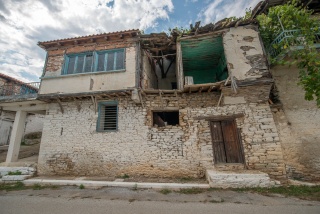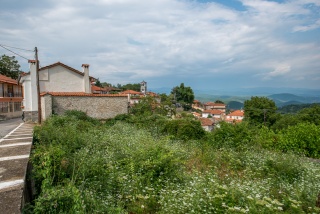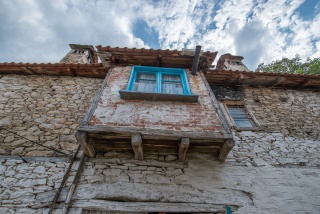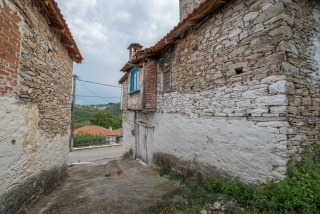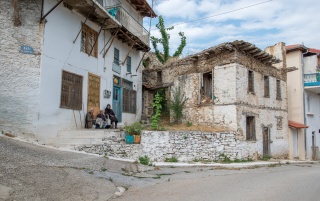Traveler's Guide
East Macedonia & Thrace
Traditional settlement of Pagoneri

Pagoneri municipality is in the Kato Nevrokopi. Pagoneri is a border village in the prefecture of Drama near the Greek-Bulgarian border, which has been characterized as a traditional settlement since 1983 and retains the air of a different era. It is an entirely stone built settlement in standard of Macedonian shape, with large comfortable houses, which testify the financial soundness of a bygone era, or at least the increased population, a phenomenon also of another bygone era. It is situated at an altitude of 750 meters, east Nestos is a natural boundary, and north the settlement of Katachloro reaches the Bulgarian border. In the west there are the settlements Achladia, Mikrokleisoura and the abandoned Achladomilia. Its name comes from the cold (gelid) water that pours of the two taps of the village, the Up and the Down. The water, as emphasized by the residents, is cold in summer and warm in winter. Its previous name, until 1927, was Tseresovo, the etymology of which is very interesting as it reveals two features of the village. So, there are two versions that are saved in the memory of the inhabitants. The fisrt one says that it was named like this because of the existence of many cherries in the region while the other version catch its origin on the composite Turkish word, tseres, which means healthy and obo, which means hill. Healthy hill that means healthy climate. Pagoneri functioned as resort area. The summer visitors relaxed with its wonderful climate and its beautiful view. The settlement was declared traditional in 1983 due to the architecture of the houses, the church and the belfry. The church with its famous belfry is the emblem of Pagoneri. It"s the first thing you see when you enter the traditional village and certainly stands out from wherever you find yourself. The church was built in 1835. Visitors can search this date which is carved on the church and of course admire the bells, which were constructed in 1832.
Address
No information available.Contact Information
No information available.

